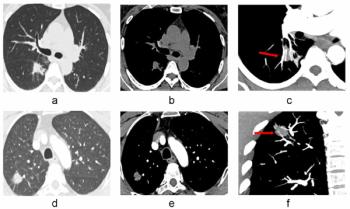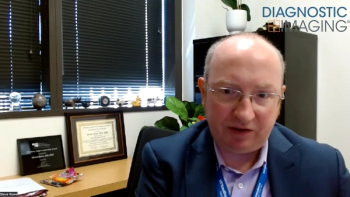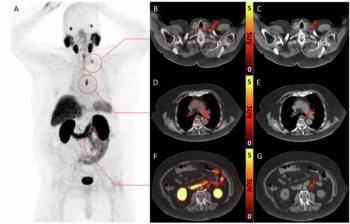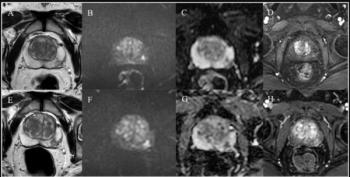
Don’t Make Me Get Interested
Providing something productive to focus on can help side-step unwanted attention.
A podcaster I like was mini-ranting about some sociopolitical issue of the day. As such talking heads often do, he was speaking as if to someone of the opposite opinion—politician, bigmouth celebrity, whatever. In the process, he shared an interesting quip that, months later, inspired today’s column: “Don’t make me get interested.”
He went on to explain that it’s an implied threat and invited his audience to use it when appropriate. He’s a capable, smart guy, with more than a few resources, including money and connections. If something gets his attention enough to make him want to take action, he has more than a decent chance of making things happen.
He’s got plenty already going on in his life, so not just anything is going to rise to that level. Most stuff is going to fly below his radar…or briefly provoke thought or emotional reaction. But, if something interests/angers/enthuses him sufficiently to take it on as a personal project, he’ll be committed enough to make an impact. Hence, the threatening aspect: Don’t make him get interested in something you’d rather he not pursue, such as the opposite side of a political campaign…because he might just make your guy lose.
There are any number of ways you might thusly provoke someone. Jeopardizing their interests with your actions or statements…or inactions, pertinent things left unsaid…is a common one. Most rads (and, indeed, other professionals across the board) have experienced this in their career paths — if one gets the idea that their future in a current job is not as promising as it might be elsewhere, sooner or later they’ll get interested in the possibility of other jobs.
That can happen if they’re paid less than they think they’re worth, given undesirable hours, or have no hope of upward mobility within their group’s ranks. Also if they come to feel that promises aren’t being kept or things are otherwise not moving in hoped-for directions. A sense of being insufficiently appreciated and/or respected as a professional. None of these dissatisfactions have to be reasonable or realistic to anybody other than the individual, mind — all that matters is that they’re sufficiently motivating to the individual.
For more coverage based on industry expert insights and research, subscribe to the Diagnostic Imaging e-Newsletter
This sort of thing isn’t just about changing jobs, of course. Rads can get interested in all sorts of things that others in the group might wish they wouldn’t. Perceived abuse of protocoling by referrers, for instance, or excessive use of imaging at all. Next thing you know, a rad who got interested in there being too many triphasic abdominal scans or middle-of-the-night MR is waging a personal war against the clinicians and making everybody unhappy in the process.
So what do you do to avoid getting someone interested in (and then pursuing) things you’d rather they not? Well, the utopian answer would be to have everyone freely discuss everything of interest to them—encouraging shy folks to come out of their shells and participate so they don’t suffer in silence—and then come up with universally-satisfying, diplomatic solutions. Or at least make sure people understand the whys and wherefores of not getting everything they want.
Obviously, not going to happen 100 percent…but it’s still probably a good idea to make efforts in that direction whenever possible. If people feel like they’re being heard, even solicited for their thoughts, it goes a long way. The opposite—a culture where opinions are not sought out at all, or even discouraged/disparaged when shared—adds insult to injury. Someone who might not have gotten interested in going their own way could be motivated to do so by a sense of “They brushed me aside? I’ll show them…they’ll be sorry when I do XYZ.”
Another approach comes to mind in light of a pup who joined my home two weeks back. Quite a different personality than our previous doggo (who, unfortunately, had developmental renal dysplasia and barely made it to age 4). The current pooch is far more energetic and brighter…thus, capable of getting into far more trouble.
In other words, lots of things get her interested: Places she shouldn’t go, things she shouldn’t get/destroy, and our poor cats who were accustomed to being mostly left alone by the previous dog. Just as with humans, we’re obviously not going to let the dog do whatever she pleases…but, we can’t exactly reason with her about why she can’t have this, do that, etc.
A big part of the solution, just as with humans, is redirection: Provide something harmless (or, ideally, productive) to get and maintain their interest. One might call it pre-direction instead of redirection, since it’s far easier to control the situation if you can prevent the unwanted interest from occurring in the first place.
For a puppy, that means things like playing with them, getting them toys that will hold their interest…even “slow feeders” that make meals take more time and effort so they can’t inhale their kibble (and, then, possibly vomit it back up a few minutes later on the living room rug). An engaged mind is less likely to find mischief than an idle one.
For a human—let’s say a radiologist—it might mean proactively giving them things to do beyond simply plugging away at a never-ending worklist. Committee seats, additional levels of responsibility, such as subspecialty chief or Quality Assurance poobah. Heck, make up a role if you can identify something that suits and would appeal to them.
Bonus: Most rads, approached with an open query about some special role they’d like to take on, will probably feel complimented. Instant morale boost and sense of engagement by the group. They might even respond by telling you what potentially-negative interest they were liable to develop, giving you a chance to put them on a related task in a far more constructive way.
Follow Eric Postal, M.D., on Twitter,
Newsletter
Stay at the forefront of radiology with the Diagnostic Imaging newsletter, delivering the latest news, clinical insights, and imaging advancements for today’s radiologists.






























